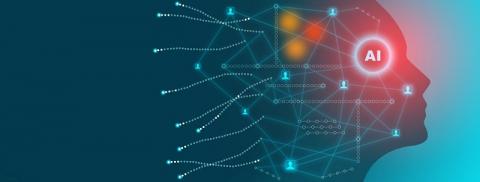Adaptive Learning Comes of Age
Back in the early days of my career, I was privileged to be involved in something that has lately become a fairly hot topic in today’s eLearning community. I’m talking about what we’re now calling “adaptive learning.”
The year was 1991, and in that time there wasn’t such a catch-all name for what we were doing. Back then, most companies were producing their training programs on videotape. Which is precisely where I fit in, making my living writing, producing and directing corporate and educational training videos.
That’s when I had the opportunity to join a Silicon Valley company that was the brainchild of the renowned Stanford University professor Patrick Suppes. What Dr. Suppes pioneered when he founded Computer Curriculum Corporation (CCC) in 1967 was nothing less than the use of computers in learning. Nineteen sixty-seven? Hardly anybody had even touched a computer in 1967. I arrived there long after the early beginnings. By then, Dr. Suppes had returned to Stanford, but many of his protégés remained.

The company lore held that what set its software apart was that it learned how students learned. So, instead of just vending out instruction to K-12 students via a one-way channel, it was capable of tailoring lessons much in the same way as an expert human tutor would. One of the biggest brains in the place, a chain-smoking super-nice guy named Mario Zanotti, expressed it this way: that the computer would know the best next question to ask the student. It produced formidable results. Students could advance several grade levels within one academic year. If that sounds vaguely magical, or like artificial intelligence… well, you should have seen the mathematical algorithms scrawled on the blackboards all around Mario’s office.
To me at the time this was particularly mind-blowing, especially given my own commitment to educational video. I had to admit: no matter how powerful and engaging video is, it is essentially a one-way learning experience for the learner; even branching video is. I was hooked.
The work of Dr. Suppes and many others in that field continues to this day, most notably in the field of education. CCC was sold to Simon & Schuster and later to Pearson Education. McGraw-Hill likewise purchased Redbird Education, a company that carries on one of Suppes’ other initiatives: Stanford’s Educational Program for Gifted Youth.
Adaptive Learning in the World of Corporate eLearning
Of late, the world of corporate eLearning has begun to pay a lot more attention to some of these principles. You can hardly go to an industry conference or read a training and development journal without hearing about “adaptive learning.”
It turns out to have a lot in common with the attributes that were talked about at the old Computer Curriculum Corporation. Tune in to the conference sessions and you’ll hear:
- “…we provide one-on-one instruction ‘like an expert tutor’…”
- “…knowing the next best thing to provide each learner…”
- …and even “AI-assisted predictive algorithms” can pinpoint the ‘how’ of learning – not just the ‘what’.

So how does this apply to the corporate setting?
Leaders in the corporate L&D world are looking at adaptive learning as a key to true personalization of learning and a necessary step to driving sustained professional improvement in the workplace of the future. And as would be expected, recent technological advancements are leading to this “coming of age” of adaptive learning.
In his 6/3/2018 article, “A New Paradigm for Corporate Training: Learning in the Flow of Work” (https://joshbersin.com/2018/06/a-new-paradigm-for-corporate-training-learning-in-the-flow-of-work/) renowned learning industry analyst Josh Bersin notes that:
“In the last five years we’ve focused on “continuous learning,” video, and mobile libraries, so we have built the paradigm of category- and channel-based learning and recommendations, which has given birth to the market for learning experience platforms, micro-learning systems, adaptive learning systems, and a new era of AI-based content delivery solutions.”
Some of the newer learning management system vendors have been among the first to move in this direction, with companies like Area9, Grovo, Axonify, Degreed, Pathgather, Edcast, Qstream, Rehearsal, Wisetail and numerous others that Bersin says are:
“…offering a new set of tools that… provided a ‘modern learning experience’ that could integrate, manage, curate, and organize videos, articles, podcasts, and any other form of digital content. And these systems are now forming the basis for a whole new LMS industry.”
But there’s a distinction, as I see it, between what you might call “adaptive curriculae” and the kind of personalized adaptive learning that mimics a student’s experience with a one-on-one tutor. Not long ago I attended a presentation at the Boston area ATD meeting to see what Area 9 had to say about adaptive learning. Nick Howe, their chief learning officer, gave a compelling presentation and he drew a similar distinction. An LMS that can provide a prescriptive set of varied, curated learning activities for students is powerful, but not the same as adaptive instruction that can ask the best next question of the learner.
Howe also made it clear that adaptive learning is not about learning styles. He spoke much as my old Silicon Valley colleagues did, about learning how the student learns. “We are studying you as you learn,” he said.
With adaptive learning today, one of the techniques being used is to ask learners their level of confidence in knowing the answer to a question that’s being put to them. Another is to time them.
And then, of course, there is the creation of the learning activities themselves. As an elearning provider in the corporate world, I asked Howe about this. On my mind was the instructional design effort for activities – some of which might not be seen by every learner – and the cost of doing so. He acknowledged that as a developer, you do put in more work than a “traditional” learning program, but estimated that was perhaps only 10% more. I’ll leave it up to you readers to say whether you think that’s a fair differential to pay when your goal is to build mastery as quickly and efficiently as you can.

Ongoing Discussion
Time will tell how broadly this will catch on in the corporate elearning field. And in the meantime, the elearning industry is certainly carrying on a vigorous discussion.
In an article “Adaptive Learning 3.0: AI and Machine Learning“ in the March/April 2019 issue of Training Industry Magazine (https://trainingindustry.com/magazine/mar-apr-2019/adaptive-learning-3-0/), Patrick Weir, founder of Fulcrum Labs, refers to the 3rd generation of adaptive learning, noting that:
“Adaptive Learning 3.0 is characterized by the application of AI and machine learning to more accurately replicate the one-on-one instructor experience. AI-powered adaptive solutions leverage network knowledge maps to create knowledge and behavioral nodes, forming deeper relationships between content, learning objectives, and persona types, to name a few. This powers a more efficient, effective learning experience and enables:
- Complex, real-time adaptations based on learner performance and behavior
- Data-driven, personalized hints, feedback, remediation and knowledge reinforcement
- Predictive, forgetting curves and insights into future knowledge application
- Comprehensive application-level mastery of skills and knowledge
- Reduction in learning times”
And according to Claudio Erba, CEO of learning platform leader Docebo in their must-read “E-Learning Trends 2019” report (https://www.docebo.com/resource/report-elearning-trends-2019/):
“…while we might only be scratching the surface in AI-powered enterprise learning, we will soon live in a world where learning is powered by sets of specialized algorithms (each responsible for a different task, such as analyzing/reading content, extracting video “pills” and re-aggregating them into courses based on various learning preferences and styles), that will exponentially improve the personalization of learning. In fact, it’s an absolute certainty that AI will not only produce a learning platform capable of delivering personalized learning environments with content that adapts as necessary (on its own) but is actually created based on the individual needs to vastly improve the quality of L&D in ways you can’t even imagine yet. AI’s ability to aggregate and curate internally and externally-produced content, while relieving L&D admins from menial tasks, brings real smarts to enterprise learning in a way that transforms it from a commodity to your organization’s competitive advantage.”
Conclusions
The world of adaptive learning is still in its early stages, with many new players and a lot to be figured out. I remain as intrigued as I was in the 1990s, maybe more so, since the science of computing and the science of learning theory have advanced since then.
We’d like to hear from you. Let us know how adaptive learning is being deployed in your environment – or think about how you might like to see adaptive learning deployed. You can share your visions with our readers by emailing me at hstokes@illumina-interactive.com.
Here are a few additional links on this topic:



